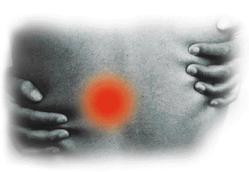By Eulalee Thompson, Staff Reporter 
The majority of Jamaica's cancer patients are dying with uncontrollable pain because many doctors here are reluctant to prescribe the powerful painkiller, morphine - Dr. Dingle Spence, consultant in oncology and palliative medicine.
IN A report carried recently on the BBC's worldwide electronic and print services, Dr. Dingle Spence, a local consultant in oncology and palliative medicine, in referring to cancer patients here, is quoted as saying that, "a majority of people die in hospital but with uncontrollable pain". She was also quoted as saying that, "sadly, in Jamaica the management of cancer and end-stage cancer is probably where the UK was about 30 years ago".
This widely-distributed interview may have caused considerable embarrassment to Dr. Spence's local colleague but that's her story and she is sticking to it.
"There is a huge problem with malignant pain (cancer pain). One of the problems that has happened worldwide until the more recent adoption of (World Health Organisation's) international guidelines and education is that malignant pain tends to be treated as if it is acute pain.
"It tends to be treated as if you have just come out of the operating theatre and the same methods that are used which is lots of injection of painkillers that tend to be quite weak when you are talking about cancer pain," said Dr. Spence, consultant at The Hope Institute, a government-run cancer-care centre in Kingston.
She indicated further that: "With cancer patients, this pain that they have, it may wax and wane, you may be able to treat it with radiotherapy, you may be able to treat it with chemotherapy to some extent ... but really, more or less the cancer patient is going to have to live with this pain for the duration of (his life). So your approach needs to be different than in an acute setting."
A large part of the malignant pain management problem is that there are some myths surrounding the use of morphine, a strong opioid, making many local doctors reluctant to prescribe it.
"One of the problems is that doctors are afraid to prescribe it because of two or three deeply-held myths," Dr. Spence stressed.
MORPHINE USE MYTHS
Dr. Spence listed the myths and tried to debunk them:
1. The patient will become addicted to it. "That is a myth and I can't stress it enough, if the patient is in pain, there is no evidence that he/she will become addicted to morphine," she said.
2. It's going to stop patient's breathing. "If morphine is given orally and properly titrated or in properly prescribed doses, and the dosage is increased gradually...in layman's terms, the slowing of the breathing is extremely uncommon," she said.
3. If you give morphine now, there won't be anything left when the patient really needs it. "That is also a myth because there is no ceiling for morphine use, there is no dose above which you cannot go; the right amount of morphine is what cures that patient's pain and if it is 10mg per hourly or 1000mg then that's what the person needs and you can keep going. There is no ceiling," she said.
4. Patients get used to it (morphine) and they will need more morphine next week because their body is getting used to it. "There is no evidence of what we call, tolerance to morphine," she said.
Morphine use, Dr. Spence indicated, falls under step three of WHO three- step pain management guideline mentioned earlier. These guidelines indicate:
Step one, mild pain; use basically drugs such as paracetamol, aspirins, ibuprofin. If the patient is taking these drug correctly and the pain persists and increases then move on to step two.
Step 2 add "weak opioids" such as codeine (and a whole host of other drugs). If the pain persists and increases, then move on to step three.
Step three, add strong opioids and the strong opioid of choice is morphine.
"Now the problem we are having in Jamaica is that people stop at step 2. They are afraid or they don't have the education or the experience to say that when step 2 is not working ... what tends to happen is that they switch from one to the other analgesic in step two...and they (step 2 drugs) are all doing the same thing, none is stronger than the other.
"And another thing is that the drug that is used in the acute post-operative setting... tends to be used a lot and (it) has no place in the management of cancer pain, it has a very short half-life... and is not an appropriate drug for the use in the management of cancer pain," she said
Following these simple guidelines Dr. Spence said that between 80 and 90 per cent of pain can be controlled.
"There is no reason for people to be dying in pain, none whatsoever," she said.



